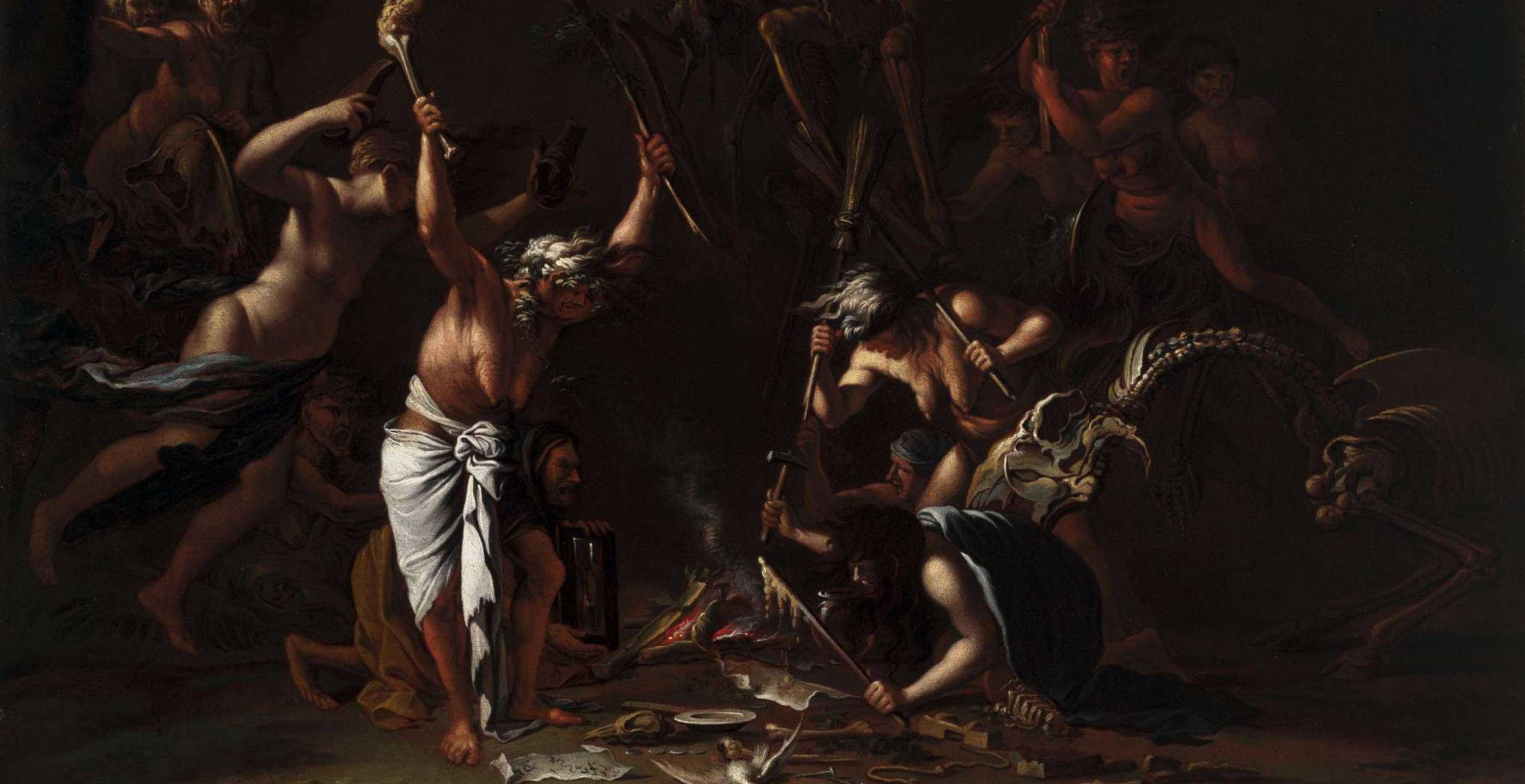The kingdoms of Scotland and England were united in 1603, when King James VI of Scotland also became James I of England. James certainly had a strange fascination with all things associated with the occult: shortly after assuming the throne, he released his best-selling book, ‘Daemonologie’ which explored the areas of witchcraft and demonic magic. He was so obsessed with the ‘black arts’ that he even convinced Parliament to pass the Witchcraft Statute of 1604, which ruled witchcraft as a crime punishable by death.
Such a background led to a heightened public anxiety about witches that would slowly fester in the decades that followed, inspired in no small part by similar concerns across The Channel in mainland Europe. Within the political and religious chaos that reigned throughout the period of the English Civil Wars, one previously unheard of Matthew Hopkins emerged.
Records of Hopkins’ early career in the art of witch hunting are a tad vague, however it appears to stem from when he moved to Manningtree, Essex in 1644. An impoverished lawyer with a strong puritanical background, Hopkins appears to have seen it as his mission to destroy anything to do with the “works of the devil”.
Hopkins believed that there were several witches regularly practicing their dark arts close to his home and apparently began his career as a witch-finder after he overheard various women discussing their meetings with the Devil in March 1644. Of the twenty-three women accused of witchcraft, four were said to have died in prison with nineteen later convicted and hanged.

Hopkins appears to have assumed the title of Witch-Finder General in 1645, claiming to be officially commissioned by Parliament with the brief to uncover and prosecute witches. Together with his entourage that included a merry band of ‘lady prickers’, they travelled the villages and towns of eastern England, trying and examining women for witchcraft.
Of course, all of this came at a very ‘reasonable’ price, said to be “twenty shillings a town”, although the records reveal that the small market town of Stowmarket paid £23 for his services. A true entrepreneur, Hopkins appears to have quickly turned his mission into a well-paid career, so much so that local taxes were even being levied in order to fund his obsession.
Many of the methods that Hopkins adopted to investigate these cases of witchcraft were taken directly from King James’ best seller ‘Daemonologie’. And although considerably less violent than those methods adopted in mainland Europe, they did include keeping the suspect awake for days on end, resulting in the suspect, now suffering from sleep deprivation, being coerced into confessing to almost anything.
And on to the work of those lady pickers; well, their job involved cutting the arm of the accused with a knife, needle or pin, and if she did not bleed, she was said to be a witch. However, with a very good living to be earned from unmasking witches, retractable or blunt blades were often adopted.

Engraving of needles used to prick suspected witches and so to determine their guilt
Hopkins’ favourite confessional method of torture however was the infamous “swimming test”. This unbelievably simple but effective test involved binding the arms and legs of the accused to a chair before throwing them into the village pond. If they sank and drowned, they would be innocent and received into heaven; if they floated, they would be tried as a witch.
Between the years 1644 and 1646, Hopkins and his associates are believed to have been responsible for the deaths of 300 women. And in the days when an average farm worker’s wage was just 6 pence a day, it is estimated that Hopkins may have collected fees of around £1000 for his gruesome services.
Hopkins even wrote a short pamphlet detailing his witch-hunting methods: ‘The Discovery of Witches’, which was published in 1647. His own end however, is far from clear; some accounts say he drowned undergoing his own “swimming trial” after being accused of witchcraft himself.
Many strange events appear to have taken place during the turbulent days of the English Civil War 1642-51, when the rule of law and order had all but broken down. Just a few decades later, the last execution for witchcraft in England took place in Exeter, Devon, when Alicia Molland was put to death in March 1684.
Published: 4th April 2017.









